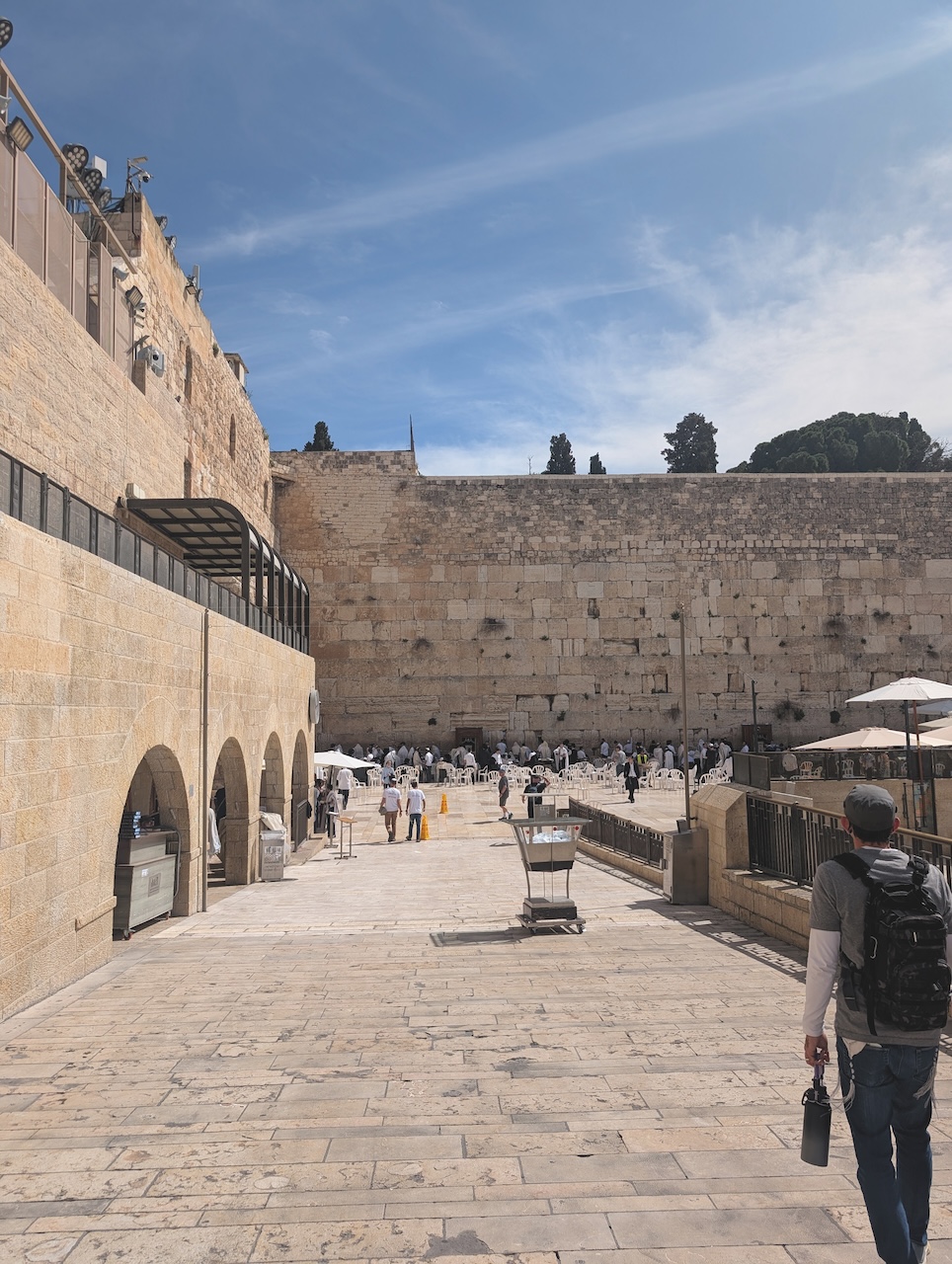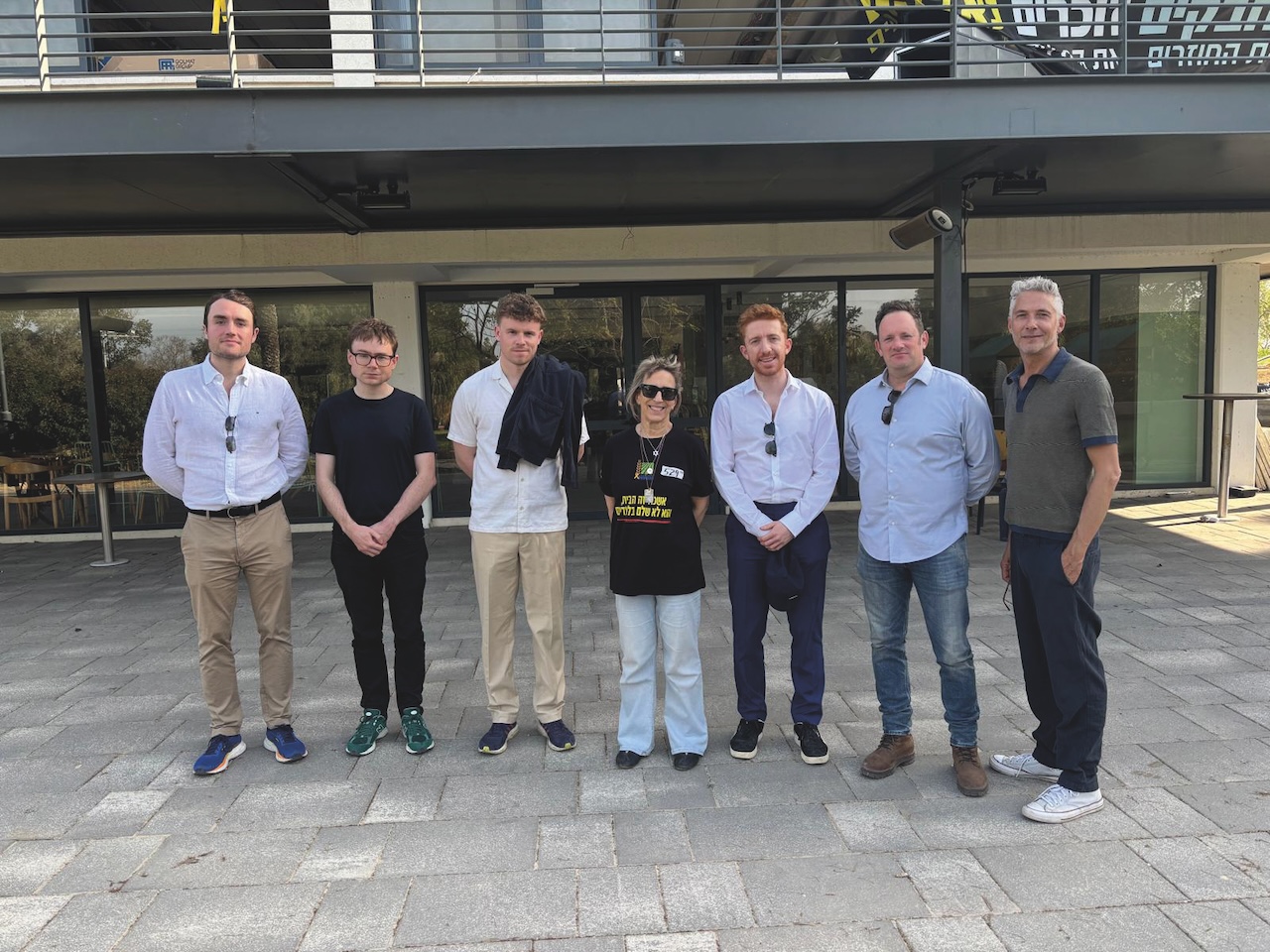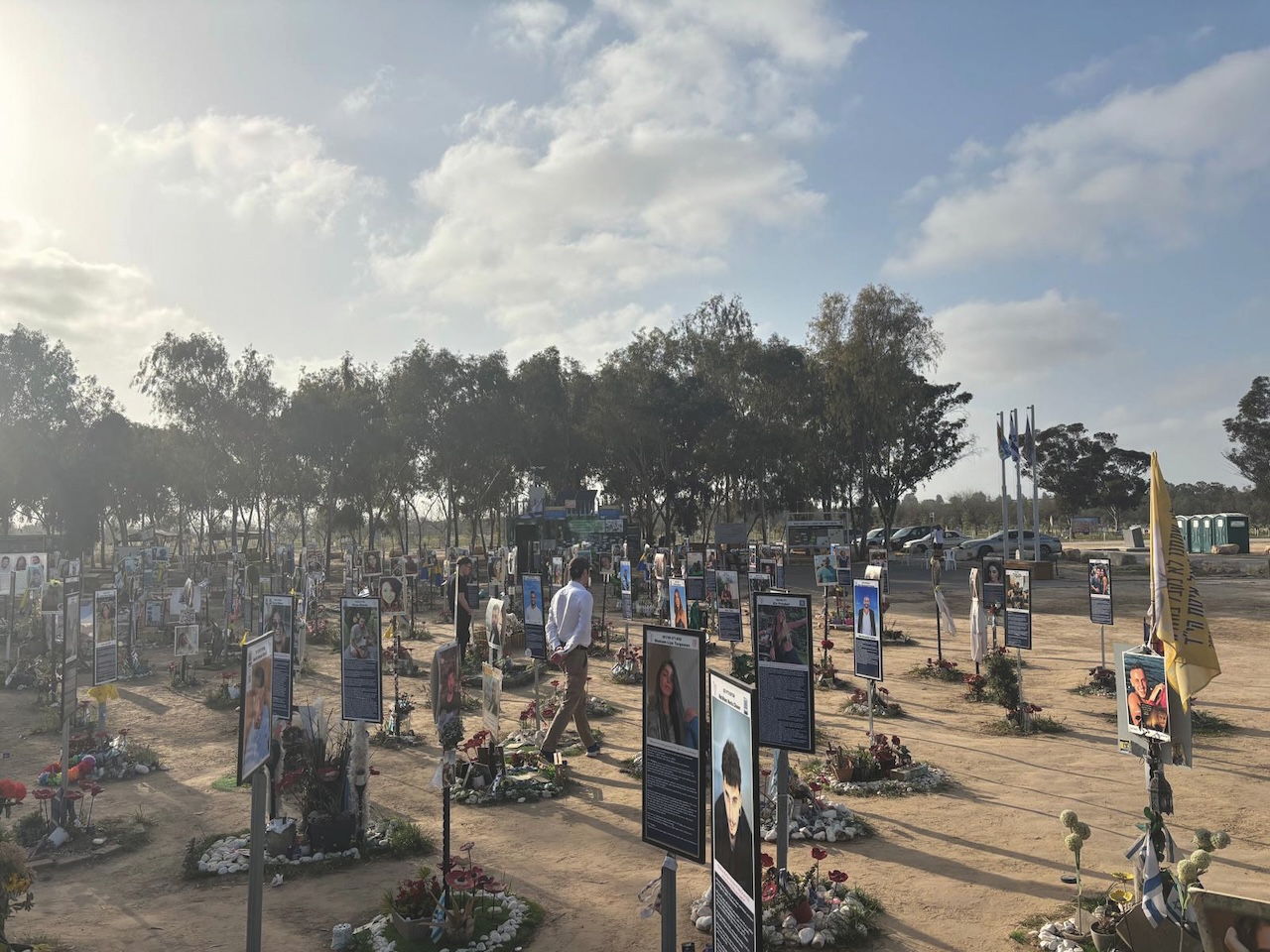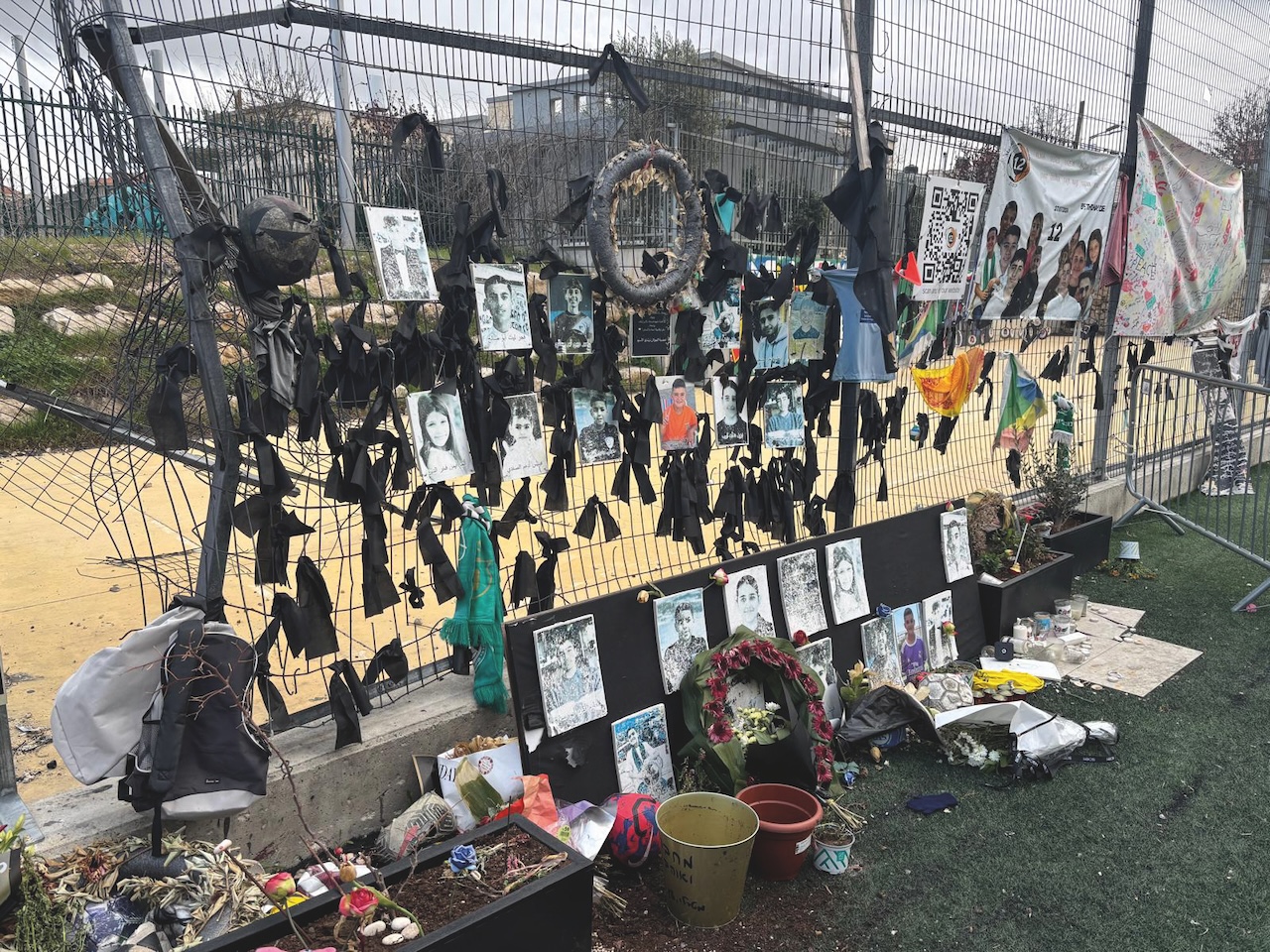Five Days In Israel: "Victory For Us Is Civilians Coming Back"
Passover at the Western Wall in the Old City of Jerusalem, April 15, 2025 (Credit: AP Photo/Leo Correa)
8 min read
For two decades, Bicom has worked to put Israel’s case in the British media, including by taking small groups of journalists to the country. Tom Scotson went on one of their first trips since the October 7 attacks and subsequent war in Gaza. He found a people in trauma, united in a belief they face an existential threat and yet deeply divided over Benjamin Netanyahu. These are his impressions over five days last month
Sunday 16 March
We are driving towards Harmony Hotel, Jerusalem, from Ben Gurion airport at 10pm. The Jewish festival Purim is finishing, and Israelis are leaving the city, creating a traffic jam on the other side of the motorway.
“This is how busy it will be in the coming of the Messiah,” says our taxi driver in Hebrew, giggling at the backlog of cars.
As we arrive in Jerusalem I step out of the taxi and hear a sudden bang in the middle of the road. At first I fear the worst, but my heart rate slows as I realise Jerusalemites are still partying in garish fancy dress and letting off fireworks in the streets.
Monday 17 March
Jerusalem is baking hot and empty as the hangovers from the night before begin to set in.
As we enter the Old City, I walk towards the Western Wall and rest my head against it, where I hear muffled Hebrew bouncing off the pale limestone as I say a short prayer myself.
War may be raging in Gaza between Israel and Hamas, but Arabs and Jews walk past each other like old neighbours.
It is eerily quiet in the Old City during Ramadan and Lent as we walk up Via Dolorosa. A cleaner is washing Coca-Cola off the street tiles as an Arab shopkeeper tries to sell me pick-and-mix.
Tourism dried up after Covid and has fallen off a cliff since the war. Queues to enter the Holy Sepulchre, which normally stretch along the Christian Quarter, are non-existent. The Old City, however, still has an extraordinary energy.
After three hours, we have to leave for Yad Vashem. The memorial is quiet, and we are the only group not in military uniform being guided around.
 Western Wall
Western Wall
Our tour guide, an older lady, speaks to us through crumpled headsets and gives us a descriptive history of the Holocaust. She makes two passing mentions of President Donald Trump’s inflammatory language in the 21st century.
We are later shifted off to the Knesset, where tensions are high after Benjamin Netanyahu has sacked the head of Shin Bet.
Heavy protests against the government in Jerusalem will take place the next day, but a microcosm of the debate is happening next to the cafe as I bite into a croissant and wash it down with a bitter coffee.
A staffer from the Democrats tells us Netanyahu’s actions are the end of democracy as we know it in Israel. Boaz Bismuth, a Likud member of the Knesset (MK) and Netanyahu loyalist, comes over minutes later and dismisses such claims as utter nonsense.
Tuesday 18 March
I wake up in the middle of the night to hear jets flying over my hotel. The ceasefire in Gaza has ended, and the fighting between Israel and Hamas has restarted.
The Hamas-controlled health ministry says 400 people were killed by strikes that day. The ministry does not differentiate between combatants and civilians, but a report last year by the UN said the majority of verified deaths over a six month period were those of women and children.
We drive towards the Gaza border in the morning and stop at a look-out point facing Jabalia. I can feel the vibrations through my toes from the airstrikes, which are pounding the ground in front of my eyes. “It is not safe to be here,” says an Israeli policeman, as we are told to leave the area.
As we drive through the country, it is hard to escape posters of the remaining 59 hostages held by Hamas in Gaza. We meet people traumatised by the October 7 attacks, where 1,200 were murdered and a further 251 abducted.
Escapov, 70, from Sderot, recalls how Hamas terrorists captured a police station opposite his home that day and killed dozens of civilians. “I am too old for this shit,” he says. He adds that the culture has changed in the country and now most people carry guns.
Across the road, we sit down and eat shawarma in a restaurant full of armed IDF soldiers who are on their lunch break. One man, who looks unarmed, lifts the back of his white T-shirt up and moves his pistol around between his T-shirt and jeans. I feel like I am a world away from London.
 Kibbutz Nirim (Tom standing third from right)
Kibbutz Nirim (Tom standing third from right)
We drive along Road 232 – which connects kibbutzim which were heavily attacked by Palestinian gunmen on October 7 – before arriving at Kibbutz Nirim to meet Adele Raemer.
“If you hear an alarm, you have zero to 10 seconds to find shelter or get to the floor,” she says. Kibbutz Nirim used to be “95 per cent paradise” in Adele’s eyes, but now only 16 people live on the settlement compared to 430 prior to the war.
All wooden doors have been replaced with iron cladding – an apt metaphor for how entrenched people’s views have become on the frontline.
After sitting through a well-rehearsed talk, I ask Adele what has changed since the war began and whether we will see a “two-state solution” soon.
“I always used to say that I believe in a two-state solution,” she says. But now? “If there’s a two-state solution, God forbid that would be rewarding terror.”
We leave the kibbutz and travel two hours north to Tel Aviv, a concrete jungle which feels more like Brisbane than a Middle Eastern city.
 Nova Festival Victims Memorial
Nova Festival Victims Memorial
In Hostage Square, I am surrounded by posters, yellow ribbons, and an electronic timer which towers over me as it counts every second the hostages have been held for.
Freed hostages and their families are giving a rally and desperately calling for an end to the war, while laying into Netanyahu. The crowd chants in Hebrew, “We are with you, you are not alone” in a sign of solidarity after every speech.
We later sit down with Aviva Siegel, who was taken by Hamas and held in Gaza for 51 days.
Describing her ordeal, she explains how mothers, children and grandparents were celebrating her capture in the streets as if it was a party. She was moved 13 times and lost 10kg of weight in captivity. She was forced to make pitta bread for her captors. “They ate and they ate it all. They didn’t leave us anything to eat the next day.”
She ends our interview by telling us she will never give up being a “peacemaker”.
Wednesday 19 March
Struggling to keep my eyes open, I travel towards Israel’s border with Lebanon and receive a security briefing with commander Dotan Razili, who sits us down to face the border known as the Blue Line.
He compares the failures of October 7 with the fall of Singapore in the Second World War for British history obsessives and contrasts it with the military successes the IDF has had against Hezbollah.
I ask him what victory looks like in the north and Gaza, as Netanyahu has been criticised for not having a “day after” plan.
“Good question,” he says. “Victory for us is civilians coming back to the communities, feeling safe.”
But what about the war with Hamas? “Israel has to decide what is more important: hostages or bringing down Hamas? A big, big challenge,” he replies.
I chase this point with my hosts, the Britain Israel Communications and Research Centre (Bicom), but it is largely ignored. It is probably too bleak of a question to consider for any Israeli, as the conflict continues to wreak havoc on the nation’s fabric.
 Majdal Shams
Majdal Shams
We later travel to the Golan Heights and into the Druze town of Majdal Shams, where I meet the families of some of the 12 children and young adults who were killed by a Hezbollah rocket attack in July. The sirens went off but no one had any time to react.
Children are still playing football on the astroturf as a memorial of black ribbons, candles and photos of the dead seems to watch them from the sidelines.
At the nearby town of Mas’ade we meet Adham Safadi, an ambulance driver, who looks utterly broken. On the day of the missile attack he told his daughter, Venes Safadi, to be careful as there was “a war going on”.
He was called out to an emergency on the football pitch only to see his daughter’s dead body on the floor. Despite his suffering, he is hopeful that the future “will be white and not black”.
I feel guilty for sharing a platter of steak and fries with red wine on the Sea of Galilee while hostages are being held and children killed in Gaza.
The locals are grateful to anyone visiting Israel at a time of war. “Thank you for coming to Israel!” shouts the restaurant host in bright pink glasses as I leave.
Thursday 20 March
Overnight I slept through a missile siren. Two more projectiles were fired at Ben Gurion airport today.
As someone in my hotel tells me the news, I learn the IDF has expanded its ground offensive in Gaza. Around 700 people have been killed including several senior Hamas members, according to the Hamas-run health ministry.
The war between Israel and Hamas feels never-ending. And the hatred between some Israelis and Arabs became more vivid on the flight home.
An Orthodox Jew, sitting in the next-but-one seat to me, is deep in conversation with a Bicom representative about the war. “I don’t like Arabs,” he says. The Bicom employee is keen to correct him.
Peace feels very far away.
Tom Scotson travelled to Israel with Britain Israel Communications and Research Centre (BICOM)
